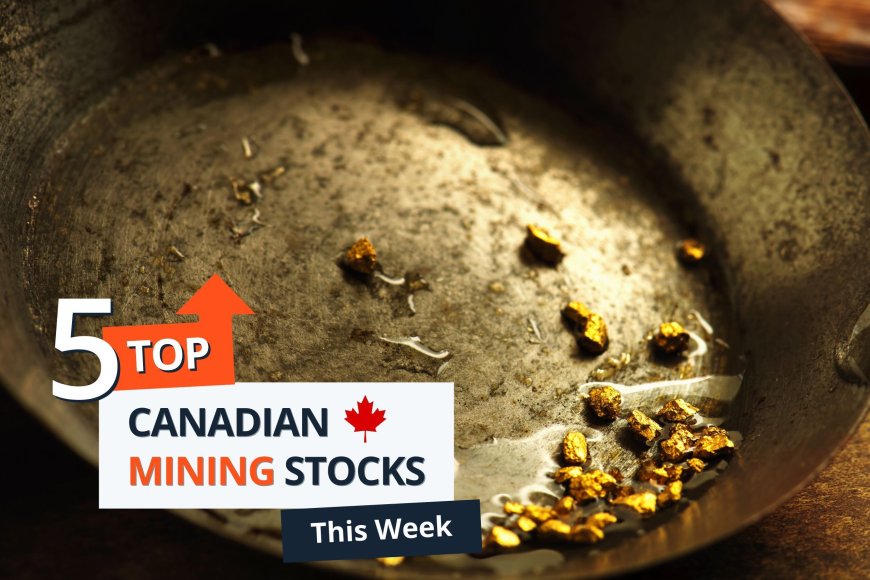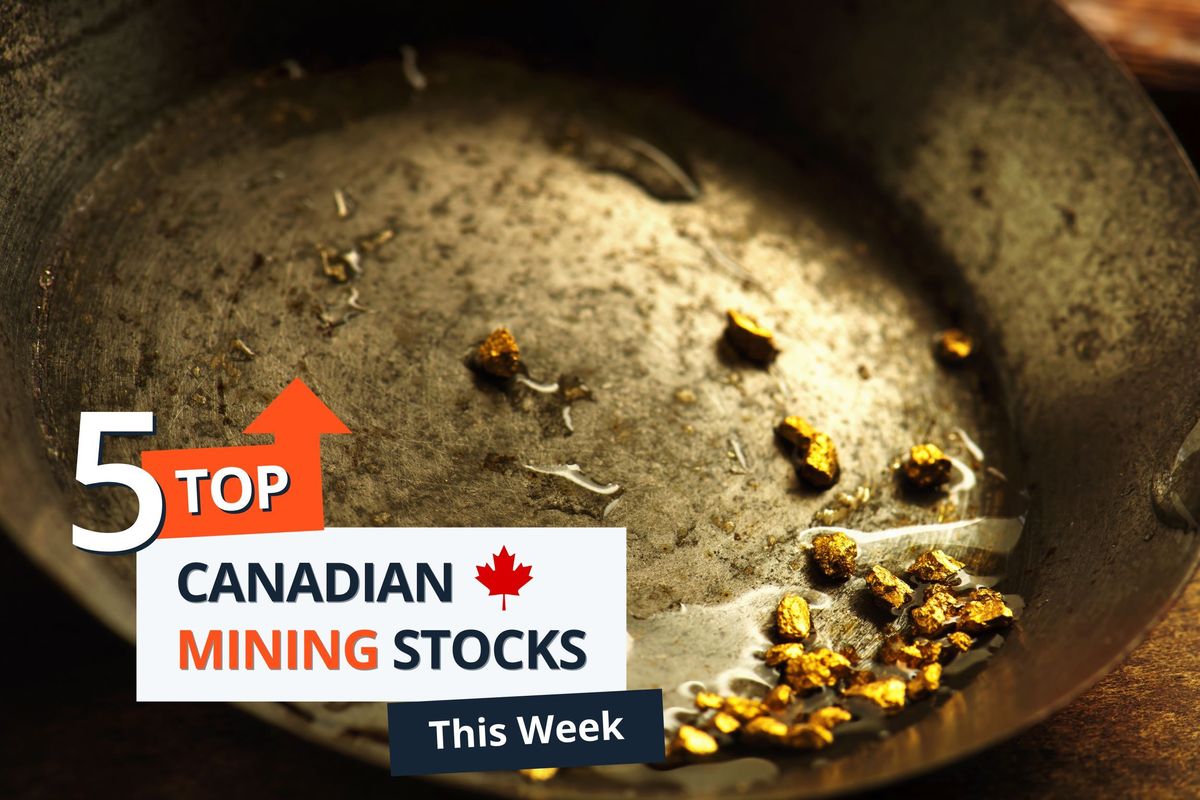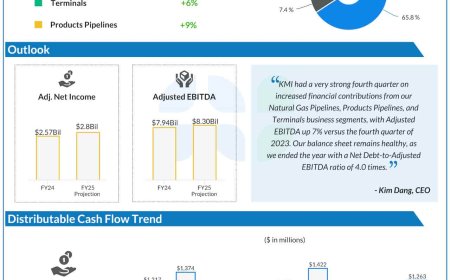Top 5 Canadian Mining Stocks This Week: Omineca Jumps 67 Percent
Welcome to the Investing News Network's weekly look at the best-performing Canadian mining stocks on the TSX, TSXV and CSE, starting with a round-up of Canadian and US news impacting the resource sector.The S&P/TSX Venture Composite Index (INDEXTSI:JX) fell 2.87 percent on the week to close at 586.88 on Friday (December 20). Meanwhile, the S&P/TSX Composite Index (INDEXTSI:OSPTX) posted a 2.6 percent decrease to hit 24,599.48, and the CSE Composite Index (CSE:CSECOMP) was down just 0.12 percent to reach 130.58.Statistics Canada released November’s consumer price index data on Tuesday (December 17). The data showed that inflation in Canada continued to cool, posting a 1.9 percent year-over-year increase, down from the 2 percent recorded in October. The agency said the decrease was partly due to a 0.4 percent decrease in gasoline prices and consumers taking advantage of lower prices during Black Friday sales.StatsCan also released its October monthly mineral production survey on Thursday (December 19). The release shows copper production in Canada increased to 37.5 million kilograms from 35.43 million in September. Gold production also increased, rising considerably to 26,553 kilograms from 15,296 kilograms the prior month. Meanwhile, silver production decreased slightly, with 25,166 kilograms produced in October compared to 26,827 kilograms the previous month.South of the border, the US Federal Reserve held its final meeting of the year this past Tuesday and Wednesday (December 18). The committee cut the benchmark rate by 25 basis points, lowering it to 4.25 to 4.5 percent.The Fed cited an improving economic outlook, with inflation easing towards its target 2 percent range and a better job market balance. However, the Fed is widely expected to slow further cuts in the new year as it continues to gather data. In his remarks following the meeting, Fed Chair Jerome Powell wouldn’t rule out future increases as some inflationary indicators have stalled in recent weeks.The news was not well received on Wall Street, with the Dow plunging more than 1,000 points following the announcement.Over the course of the week, markets were broadly down. The S&P 500 (INDEXSP:INX) fell 2.19 percent to end Friday at 5,930.84, while the Nasdaq-100 (INDEXNASDAQ:NDX) shed 2.69 percent to 21,289.15. Meanwhile, the Dow Jones Industrial Average (INDEXDJX:.DJI) finished the week down 2.25 percent at 42,840.25.Precious metals also took a hit on the Fed news, with gold and silver plunging below US$2,600 and US$30 respectively. Overall, gold lost 1 percent over the week to finish Friday at US$2,623.92 and silver sank 3.42 percent to US$29.49 per ounce. Additionally, copper fell 2.61 percent for the week to close at US$4.10 per pound on the COMEX. The S&P GSCI (INDEXSP:SPGSCI) was down 1.32 percent to close at 539.08.Learn about this week’s five best-performing Canadian mining stocks below.Data for this article was retrieved at 4:00 p.m. EST on December 20, 2024, using TradingView's stock screener. Only companies trading on the TSX, TSXV and CSE with market capitalizations greater than C$10 million are included. Companies within the non-energy minerals and energy minerals sectors were considered.1. Omineca Mining and Metals (TSXV:OMM) Company Profile Weekly gain: 66.67 percentMarket cap: C$10.91 millionShare price: C$0.075Omineca Mining and Metals is a gold exploration and mining company working to advance its Wingdam project in British Columbia, Canada. The project consists of 61,329 hectares of hard rock and placer claims within the Cariboo mining district. It is a 50/50 joint venture with D&L Mining. The site currently hosts mining operations focused on extracting placer gold from gravels 50 meters beneath Lightning Creek.According to the company, the mine is extracted through gravity separation, which uses an existing reusable water supply without chemicals, mill waste or tailings. Omineca's shares saw price gains at the end of the week, but the only news came early in the week after the company announced on Tuesday that it had expanded its diamond drilling program at Wingdam from 10 holes to 17 and up to 10,000 meters. So far, the company has completed six holes with two rigs and sent its first sample to be assayed. The company said drilling has encountered some quartz veins with various concentrations of semi-massive to massive sulphide mineralization, and included photos of the mineralized cores. Samples from several holes will be assayed for coarse gold.Additionally, on December 6, the company announced that it had entered into a non-brokered private placement of flow-through units for C$0.055 per share, with gross proceeds of up to C$2.4 million. The company said it would use the funds to explore Wingdam further as it works to find the lode source of the placer gold.2. Bayhorse Silver (TSXV:BHS) Company Profile Weekly gain: 45.45 percentMarket cap: C$17.87 millionShare price: C$0.08Bayhorse Silver is a silver-focused company


Welcome to the Investing News Network's weekly look at the best-performing Canadian mining stocks on the TSX, TSXV and CSE, starting with a round-up of Canadian and US news impacting the resource sector.
The S&P/TSX Venture Composite Index (INDEXTSI:JX) fell 2.87 percent on the week to close at 586.88 on Friday (December 20). Meanwhile, the S&P/TSX Composite Index (INDEXTSI:OSPTX) posted a 2.6 percent decrease to hit 24,599.48, and the CSE Composite Index (CSE:CSECOMP) was down just 0.12 percent to reach 130.58.
Statistics Canada released November’s consumer price index data on Tuesday (December 17). The data showed that inflation in Canada continued to cool, posting a 1.9 percent year-over-year increase, down from the 2 percent recorded in October.
The agency said the decrease was partly due to a 0.4 percent decrease in gasoline prices and consumers taking advantage of lower prices during Black Friday sales.
StatsCan also released its October monthly mineral production survey on Thursday (December 19). The release shows copper production in Canada increased to 37.5 million kilograms from 35.43 million in September. Gold production also increased, rising considerably to 26,553 kilograms from 15,296 kilograms the prior month. Meanwhile, silver production decreased slightly, with 25,166 kilograms produced in October compared to 26,827 kilograms the previous month.
South of the border, the US Federal Reserve held its final meeting of the year this past Tuesday and Wednesday (December 18). The committee cut the benchmark rate by 25 basis points, lowering it to 4.25 to 4.5 percent.
The Fed cited an improving economic outlook, with inflation easing towards its target 2 percent range and a better job market balance. However, the Fed is widely expected to slow further cuts in the new year as it continues to gather data.
In his remarks following the meeting, Fed Chair Jerome Powell wouldn’t rule out future increases as some inflationary indicators have stalled in recent weeks.
The news was not well received on Wall Street, with the Dow plunging more than 1,000 points following the announcement.
Over the course of the week, markets were broadly down. The S&P 500 (INDEXSP:INX) fell 2.19 percent to end Friday at 5,930.84, while the Nasdaq-100 (INDEXNASDAQ:NDX) shed 2.69 percent to 21,289.15. Meanwhile, the Dow Jones Industrial Average (INDEXDJX:.DJI) finished the week down 2.25 percent at 42,840.25.
Precious metals also took a hit on the Fed news, with gold and silver plunging below US$2,600 and US$30 respectively.
Overall, gold lost 1 percent over the week to finish Friday at US$2,623.92 and silver sank 3.42 percent to US$29.49 per ounce. Additionally, copper fell 2.61 percent for the week to close at US$4.10 per pound on the COMEX. The S&P GSCI (INDEXSP:SPGSCI) was down 1.32 percent to close at 539.08.
Learn about this week’s five best-performing Canadian mining stocks below.
Data for this article was retrieved at 4:00 p.m. EST on December 20, 2024, using TradingView's stock screener. Only companies trading on the TSX, TSXV and CSE with market capitalizations greater than C$10 million are included. Companies within the non-energy minerals and energy minerals sectors were considered.
1. Omineca Mining and Metals (TSXV:OMM)
Weekly gain: 66.67 percent
Market cap: C$10.91 million
Share price: C$0.075
Omineca Mining and Metals is a gold exploration and mining company working to advance its Wingdam project in British Columbia, Canada. The project consists of 61,329 hectares of hard rock and placer claims within the Cariboo mining district. It is a 50/50 joint venture with D&L Mining. The site currently hosts mining operations focused on extracting placer gold from gravels 50 meters beneath Lightning Creek.
According to the company, the mine is extracted through gravity separation, which uses an existing reusable water supply without chemicals, mill waste or tailings.
Omineca's shares saw price gains at the end of the week, but the only news came early in the week after the company announced on Tuesday that it had expanded its diamond drilling program at Wingdam from 10 holes to 17 and up to 10,000 meters. So far, the company has completed six holes with two rigs and sent its first sample to be assayed.
The company said drilling has encountered some quartz veins with various concentrations of semi-massive to massive sulphide mineralization, and included photos of the mineralized cores. Samples from several holes will be assayed for coarse gold.
Additionally, on December 6, the company announced that it had entered into a non-brokered private placement of flow-through units for C$0.055 per share, with gross proceeds of up to C$2.4 million. The company said it would use the funds to explore Wingdam further as it works to find the lode source of the placer gold.
2. Bayhorse Silver (TSXV:BHS)
Weekly gain: 45.45 percent
Market cap: C$17.87 million
Share price: C$0.08
Bayhorse Silver is a silver-focused company currently working to bring the Bayhorse silver, copper and antimony mine in Oregon, US, back online.
The mine was originally in operation until late 1984 and closed when the price of silver dropped to under US$6 per ounce. Historic sampling during the 1980s identified grades of 2,146 grams per metric ton (g/t) silver, and a bulk sampling program conducted by Bayhorse in 2014 found bonanza grades of 150,370 g/t silver.
The company has continued to explore the property and, in October 2018, produced maiden resource estimate that showed the property hosts inferred resources of 6.33 million ounces of silver from 292,300 US tons of ore with an average grade of 21.65 ounces per US ton.
The most recent update from the project came on December 19 when the company reported that drilling had encountered a strongly brecciated zone at 112 meters downhole, continuing to the current drilling depth of 148 meters. Bayhorse said the XRF field analysis showed elevated levels of copper, zinc and lead, but confirmation from a formal lab assay is needed.
3. Defense Metals (TSXV:DEFN)
Weekly gain: 40 percent
Market cap: C$32.53 million
Share price: C$0.14
Defense Metals is a rare earth metals exploration and development company currently focused on advancing its Wicheeda property near Prince George in BC, Canada. The property consists of 12 mineral claims covering 6,759 hectares and hosts rare earth element mineralization, first discovered at the site in 1976. Between 2019 and 2023, Defense extensively explored the property, drilling 60 diamond drill holes totalling 12,883.91 meters.
In August 2023, the company produced a technical report for the property with its most recent resource estimate. The site hosts measured and indicated resources of 699,000 metric tons of total rare earth oxides from 34.17 million metric tons of ore with an average grade of 2.02 percent, as well as inferred resources of 113,000 metric tons of total rare earth oxides from 11.05 million metric tons of ore with an average grade of 1.02 percent.
The company's most recent news came on Thursday, when it announced it would grant 9.95 million incentive stock options to directors, officers and consultants. The options are exercisable for five years, with 8.85 million offered at C$0.125 per share, 400,000 offered at C$0.205 per share and 700,000 at C$0.26.
4. Nevada Lithium Resources (CSE:NVLH)
Weekly gain: 37.5 percent
Market cap: C$53.18 million
Share price: C$0.22
Nevada Lithium Resources is an exploration and development company working to advance its Bonnie Claire lithium project in Nevada, US. The property consists of 915 placer claims covering an area of 74.1 square kilometers in Nye County.
According to a resource estimate issued on Monday (December 16), the site hosts indicated resources of 202,000 metric tons of contained lithium from ore with an average grade of 1,074 parts per million (ppm) and inferred resources of 499,000 metric tons contained lithium at an average grade of 1,106 ppm.
Along with the lithium, the site also has significant quantities of boron, hosting an indicated resource of 231,000 metric tons of contained boron from ore with an average grade of 1,519 ppm and an inferred resource of 407,000 metric tons at 1,505 ppm.
In addition to the technical report, Nevada Lithium announced the same day that it had been given conditional approval to list its common shares on the TSX Venture exchange. Once final approval is received, shares will be listed on the TSXV under the same ticker symbol and delisted from the CSE.
5. Gratomic (TSXV:GRAT)
Weekly gain: 33.33 percent
Market cap: C$13.02 million
Share price: C$0.06Gratomic is a junior graphite development and exploration company with assets in Namibia, Canada and Brazil.
Its primary project is the Aukam graphite property, located near the port of Luderitz in Southern Namibia. It covers an area of 141,500 hectares and has been granted four prospecting licenses. The site hosts an existing 7,200 metric ton per year modular processing plant, with the capability to be upgraded to 22,000 metric tons per year.
Gratomic has been working to create stockpiles at the Aukam mine as it starts to ramp up production. During the commercial commissioning phase of the plant, the company produced 300 metric tons of graphite.
Gratomic shared an update on the project on November 21, and announced the appointment of new Chief Operating Officer and Director Hermanus Manuel Silver.
“We have already started working on a business plan which we plan to implement in December 2024 to set the stage for greater strategic advancement of the asset and the processing plant,” he said.
The company's most recent news came on December 11, when it alleged that its former chief operating officer had wrongfully transferred some of its mining claims at its Capim Grosso property in Brazil to another graphite company. It has yet to be approved by the country’s mining authority, and Gratomic is seeking legal advice. The company stated that it had made significant investments in the transferred claims, and it plans to sell the property if it can recover it.
Gratomic had previously allowed other mining claims at its Capim Grosso property to expire as it said further exploration and development costs at the site were not justified and would drain company resources.
FAQs for Canadian mining stocks
What is the difference between the TSX and TSXV?
The TSX, or Toronto Stock Exchange, is used by senior companies with larger market caps, and the TSXV, or TSX Venture Exchange, is used by smaller-cap companies. Companies listed on the TSXV can graduate to the senior exchange.
How many companies are listed on the TSXV?
As of June 2024, there were 1,630 companies listed on the TSXV, 925 of which were mining companies. Comparatively, the TSX was home to 1,806 companies, with 188 of those being mining companies.
Together the TSX and TSXV host around 40 percent of the world’s public mining companies.
How much does it cost to list on the TSXV?
There are a variety of different fees that companies must pay to list on the TSXV, and according to the exchange, they can vary based on the transaction’s nature and complexity. The listing fee alone will most likely cost between C$10,000 to C$70,000. Accounting and auditing fees could rack up between C$25,000 and C$100,000, while legal fees are expected to be over C$75,000 and an underwriters’ commission may hit up to 12 percent.
The exchange lists a handful of other fees and expenses companies can expect, including but not limited to security commission and transfer agency fees, investor relations costs and director and officer liability insurance.
These are all just for the initial listing, of course. There are ongoing expenses once companies are trading, such as sustaining fees and additional listing fees, plus the costs associated with filing regular reports.
How do you trade on the TSXV?
Investors can trade on the TSXV the way they would trade stocks on any exchange. This means they can use a stock broker or an individual investment account to buy and sell shares of TSXV-listed companies during the exchange's trading hours.
Article by Dean Belder; FAQs by Lauren Kelly.
Don't forget to follow us @INN_Resource for real-time updates!
Securities Disclosure: I, Dean Belder, hold no direct investment interest in any company mentioned in this article.
Securities Disclosure: I, Lauren Kelly, hold no direct investment interest in any company mentioned in this article.











































